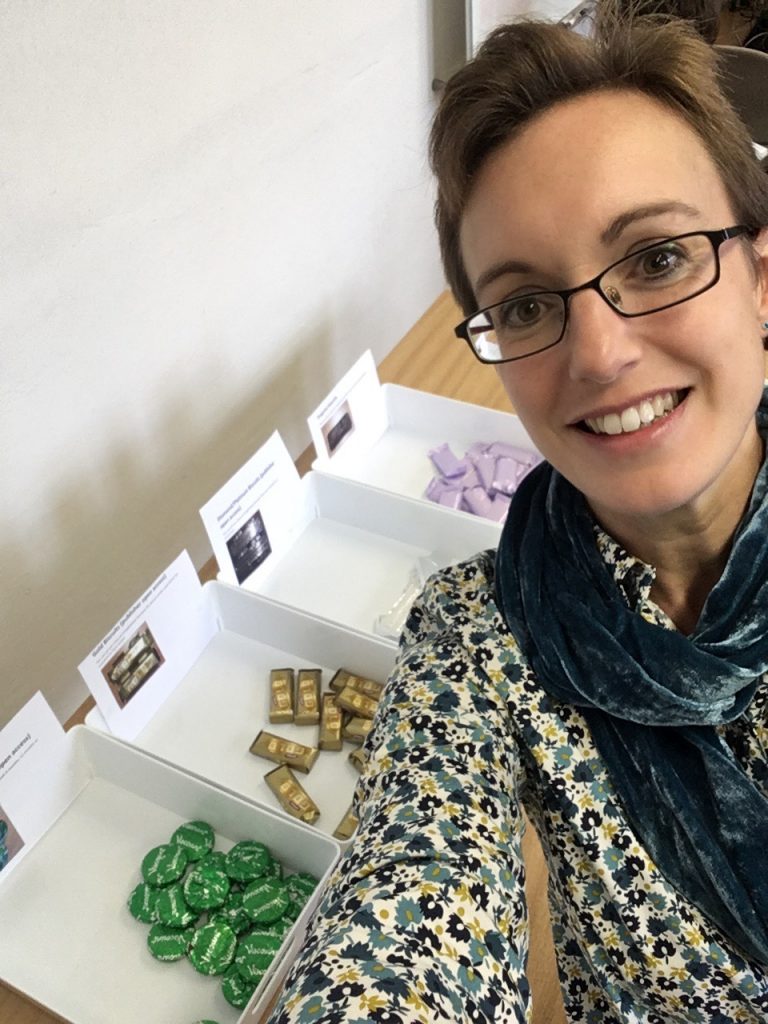
Our first activity of Open Access Week 2019 was a 15 minute briefing for staff from the University of Southampton Library, Arts at Southampton and the Public Engagement with Research Unit, followed by questions. I am sure that the high level of attendance was down to the content, not the offer of free biscuits…
I advertised the session via Eventbrite to gauge how many people were interested and to check that I had enough biscuits. Instead of using Powerpoint I prepared a Twitter thread that can be easily shared and reused explaining where the idea of using biscuits had come from followed by everything I included in the session.
The background
In the days of print journals, the peer-reviewed research articles they contained were only available to subscribers (individuals and institutions). The internet caused a shift from journals being produced in print to being published online. Subscription journals are still big business and costs are rising. The number of journals, and the number of articles published is increasing; University of Southampton researchers authored (or co-authored) at least 5099 journal articles that were published in 2018 (based on information in Pure, our Current Research Information System).
In 2005 the Wellcome Trust, a medical research charity, started requiring journal articles resulting from research they funded to be made open access. Open Access (OA) refers to free, unrestricted online access by anyone with an internet connection.
Many other funders including UKRI (previously RCUK) and the University of Southampton now have open access policies.
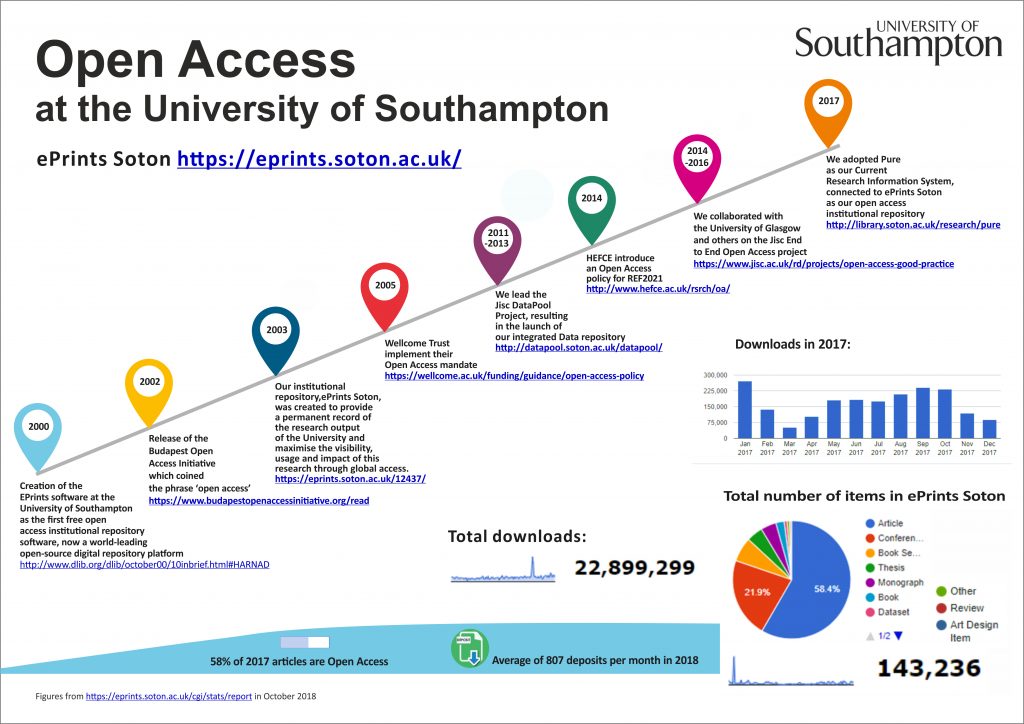
Publisher Open Access
Publisher open access is where the article is openly available to everyone directly within the online journal. Publisher open access is sometimes called gold as an umbrella term, and sometimes subdivided into gold and diamond/platinum.
Publisher open access can be in either a fully open access journal (eg BMJ Open or Glossa) or a subscription journal that allows authors to pay to make their article open access. Journals containing a mix of subscription and open access content are known as ‘hybrid’ journals, eg Science and Nature.
I am using ‘gold’ to mean the author/funder pays an Article Processing Charge (APC) to make the article openly available. The cost for gold open access at the University of Southampton will be the topic of a future blog post, but as a ballpark figure the average APC paid by the University of Cambridge for January 2017-March 2018 was £2147.
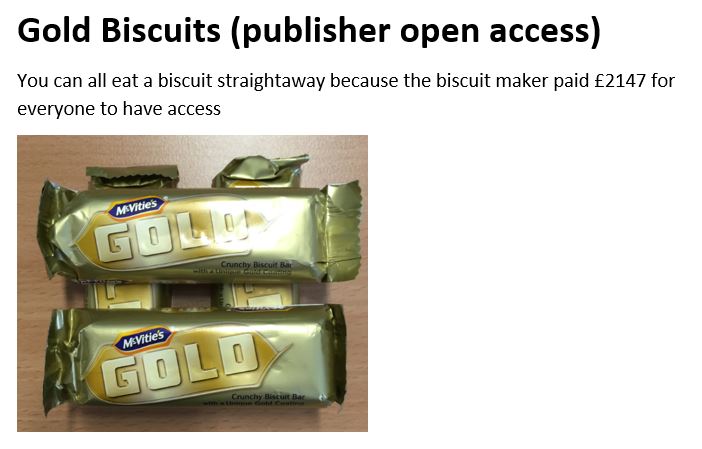
Our team (the Library Research Engagement Team) manage a block grant for open access costs from UKRI-funded researchers at the University of Southampton of £746,072.80 for 2019/20. Our modelling shows that this amount will not cover all of the applications for funding that we receive.

With platinum (also known as diamond) open access, the article is made openly available in the journal without the author/funder paying directly. Examples are the Open Library of the Humanities (OLH), funded by a model of Library partnership subsidies and SCOAP3, a partnership of libraries, funding agencies and research centres for publishing particle physics research. The University of Southampton financially supports OLH and SCOAP3.
Repository Open Access
Repository, or green open access, is where the version of the article in the online journal is only available to subscribers, but the Accepted Manuscript is self-archived by the author in a subject or institutional repository. The Accepted Manuscript is the version of the article that incorporates all changes resulting from peer review but does not have any publisher markings. The publisher may require an embargo of 6-48 months before the repository version can be made openly available; different publishers have different requirements, and some do not set an embargo at all.
The University of Southampton supports repository open access (our authors upload their articles to Pure which feeds through to ePrints Soton, our institutional repository.
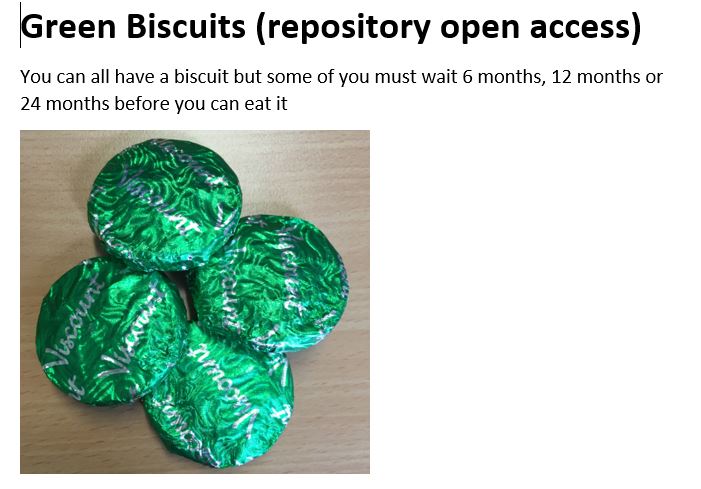
Preprints
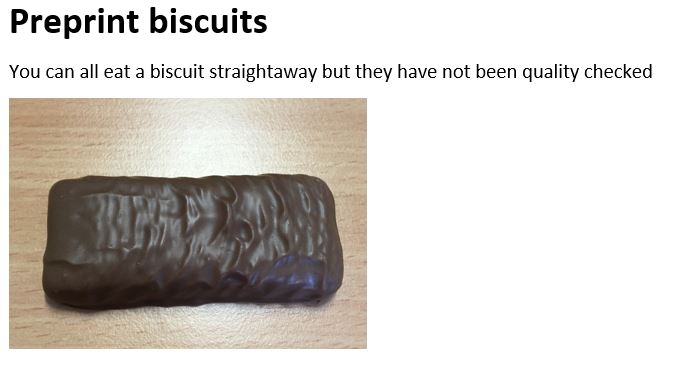
I also spoke about preprints in the session; authors may choose to post an initial version of a paper that has not yet been peer-reviewed onto a preprint server, eg arXiv (pronounced ‘archive’. The University of Southampton financially supports arXiv. I like this piece from PLOS that explains the benefits of preprints.
How do I Find Repository (Green) Open Access articles?
The University of Southampton subscribes to many journals, so if we are on campus we can access a lot of content without hitting paywalls. However, for articles that are behind a paywall in a subscription journal, try one of the tools listed here such as Unpaywall or Open Access Button to find legal open access copies from repositories.
You can try this out by pasting this article DOI, the unique journal article identifier 10.1037/xhp0000640 into the Open Access Button search box. The copy of the article it finds is available from our institutional repository, ePrints Soton.
Feedback
I asked the attendees to answer 3 questions on a post-it note providing feedback on the session (not on the quality of the biscuits!):
- Are you glad you came? (100% replied yes)
- Would you like a longer follow-up session (lots of people said yes, one said they would like a session involving our team and the Academic Engagement team presenting together to share knowledge of open access with students)
- Please leave a comment to go anonymously in this blog post (see below for a selection)
Really useful to hear about Unpaywall and how it works with subscription content
Clear and concise presentation by a presenter who clearly knows her stuff but doesn’t overcomplicate it for the novice!
It was great to have a better understanding of open access.
Very helpful, thank you. A good idea to use biscuits to explain concepts. Also nice to hear from a different team in a friendly and accessible manner.
There was a comment on the jargon and acronyms involved in open access. Queen Mary University of London have a lovely glossary and have kindly made it available to share, so I will see if I can add a link to our webpages rather than reinvent the wheel and create our own!
There was also a question written down asking why anyone would chose paid (gold) access if repository (green) access is free. I did not really cover this as it delves into a rabbit-hole of different publisher policies and funder requirements. It is a great question and the shortest answer I can give (without going into the total cost of ownership or explaining Creative Commons licences) is that not all publisher self-archiving policies meet funder requirements, either because their required embargoes are too long or because the licence the publisher requires is not in line with the funder requirement. An example of this is Elsevier; for UKRI-funded research, we currently have to pay for gold in Elsevier hybrid journals because the licence they insist on for repository open access (CC BY-NC-ND) does not comply with the less-restrictive CC BY-NC that the funder requires!
What I Didn’t Cover
So much! I did not even mention REF, go into funder policies in detail, talk about Plan S, discuss Creative Commons licences, comment on transformation arrangements and offsetting deals with publishers or touch on Open Research beyond open access. This was deliberate – I wanted to keep to 15 minutes talking and stick to the absolutely key basics.
Future Iterations
If we rerun this session I will briefly explain REF (the Research Excellence Framework), and how the REF open access requirement has led to a huge increase in the number of Accepted Manuscripts available from UK institutional repositories. I will also spend more time explaining that not all publishers allow repository (green) open access that complies with funder mandates. If we run a longer follow-up session I will create a Padlet beforehand so that people can anonymously leave comments and questions both before and after the session as an open forum for discussion.
Thank you everyone who came today, I hope you enjoyed the biscuits!
Find me on Twitter: Nicki_SotonLib
